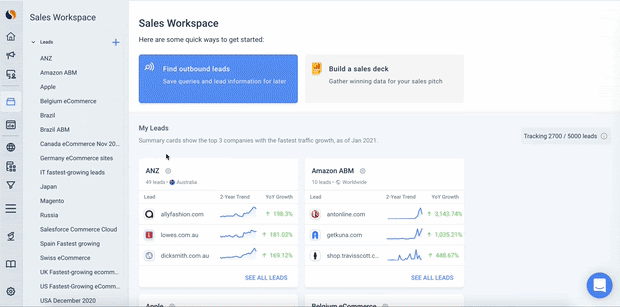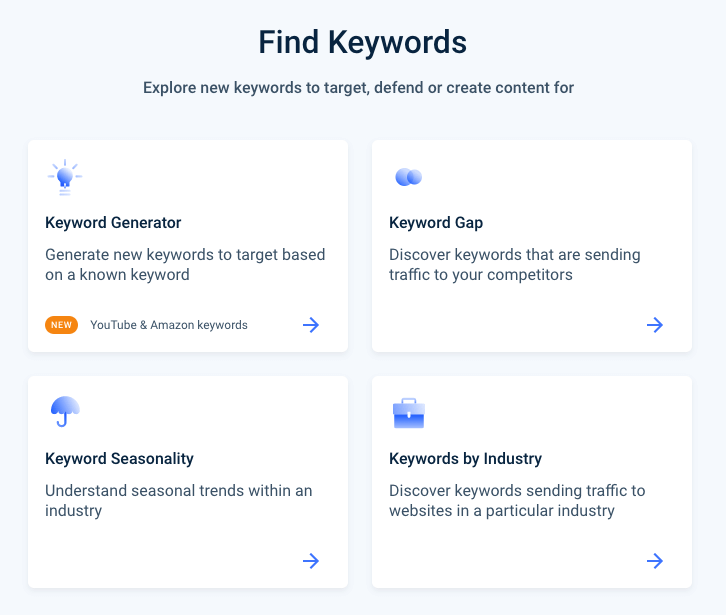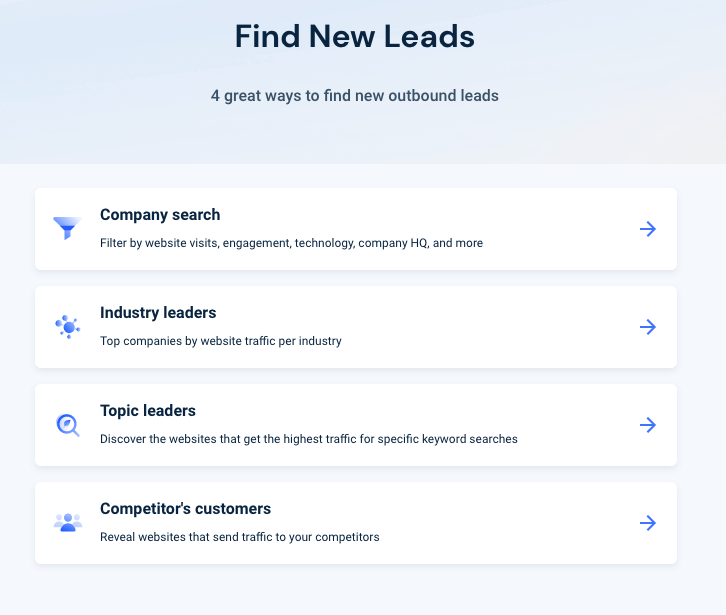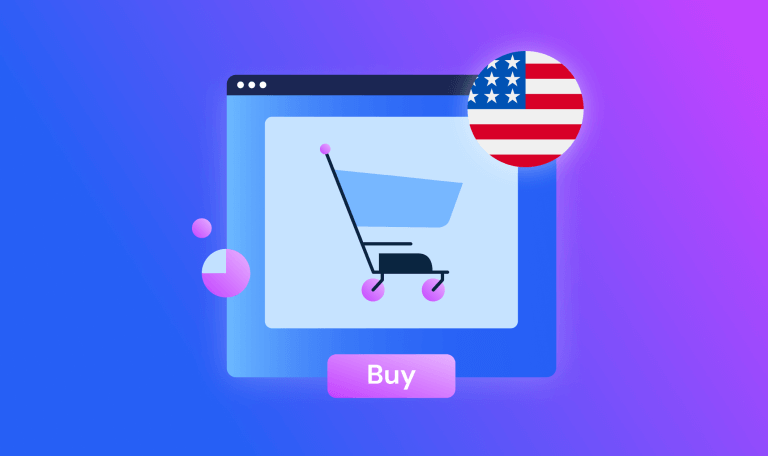How to Generate B2B Leads: 11 Tactics That Get Results

Understanding how to generate B2B leads is fundamental to sales success. It’s also fundamental to that sales and marketing alignment we are always going on about, helping to maximize those results and successes.
Sounds pretty good, doesn’t it?
If you want to know how to generate B2B leads (or simply refresh your memory), read on.👇
What is B2B lead generation?
B2B lead generation is the process of attracting new potential customers or leads, through content marketing, ad campaigns, partnerships, direct outreach and more.
The goal of generating leads is to collect their contact information so your sales team can qualify and enter them into the sales funnel.
Once you’ve built a good list of qualified leads, sales reps can begin the process of lead nurturing. The ultimate aim? The lead will eventually be ready to sign a contract and become a paying customer.
How do you generate B2B leads?
There are two main methods for generating B2B leads: inbound and outbound.
Let’s take a look at some of the most effective lead generation activities in each. We’ll start with inbound B2B leads, and how that can look.
Inbound sales and marketing:
Inbound activities aim to attract relevant leads and drive them to your website (or landing page), where they have the opportunity to fill out a lead form or key information. This is predominantly done through marketing efforts, so read on to find out why being pals with marketing will get your sales team places, and exactly what they get up to to get you there. 🚀
The goal here is to attract, inform, and engage your desired audience so they’ll willingly offer their contact information, which can then be added to your CRM.
Here are four examples of effective inbound marketing techniques that will help you generate those B2B leads.
1) Content marketing
B2B content marketing commonly includes blog posts, eBooks, and whitepapers. Each piece of content should be carefully thought out, and speak directly to the right target audience and B2B buyer persona.
The most impactful types of content focus on topics that strike a nerve with your target reader – you know, talking about their pain points, challenges, and threats.
The key is to address these topics from an informed, consultative perspective.
You not only want to demonstrate that you understand your target audiences’ concerns or frustrations, but you should also make it clear that your company possesses the knowledge, data, and tools required to overcome them.
☝️ That right there is the key to providing real value and becoming a trusted resource for potential customers.
But how do you know which topics to focus on?
A leading sales tool like Similarweb Sales Intelligence offers an Insights Generator, which automatically produces customized insights for any prospect or customer in a matter of seconds. Insights can focus on a variety of factors, such as the competitive landscape, emerging disruptive trends, or innovative new processes that resolve everyday pain points.
Once you’ve developed informative and value-adding content, the next step is thinking about how you’ll push it out to your desired audience. Here are some ideas for content distribution:
- Post them on LinkedIn, Twitter, and Facebook
- Feature them in your email newsletters
- Share them with sales reps, who can include them in their email outreach
- Ask relevant domain experts within your organization to share them with their networks
Whatever your content, you’ll want a clear CTA (call-to-action) within it to drive readers to a lead form. Some typical content marketing CTAs for generating B2B leads include:
- Request a demo
- Learn more
- Talk to sales
- Try it for free
Sometimes, you may choose to ‘gate’ a piece of content marketing – like an eBook or whitepaper – which requires a reader to fill out a lead form in order to access it. Gated content is great because it instills the feeling in the lead that they’re getting exclusive access to particularly valuable knowledge, while you gain the benefit of collecting their contact information.
2) SEO
SEO, or search engine optimization, is an organic marketing practice that aims to drive organic traffic to your website, blog, or landing pages via common search engine queries.
For example, if you search on Google for, “how to make crème brûlée” (good luck with that), all of the top results you’ll see will start with similar terminology: How to make Crème Brûlée, Vanilla Crème Brûlée, Easy Crème Brûlée.
The magic of SEO is you get people to voluntarily go to your website or blog, simply by answering their questions.
Applying SEO to content marketing is a great way to generate leads to your B2B business. Moreover, you can assume that those leads have a relevant use case for your product or service, since they’re searching for information that you provide.
Pro tip: Ensure your SEO strategy is targeting the right keywords with Similarweb’s Keyword Research Tool.
3) Email marketing
Email marketing is another great way to generate leads in B2B sales, and there are so many types of email campaigns you can create too.
Different emails serve different purposes; they all contribute to the overall goals of introducing leads to your company, nurturing them so they’re “well-baked”, and nudging them to engage.
For example, you can have an email newsletter that compiles your top blog content, eBooks, and whitepapers. You could also create emails dedicated to exciting company announcements, product updates and features, user onboarding, and of course, lead nurturing.
In all of these different types of emails, you’ll want to account for the following three factors.
- Segment emails to ensure maximum personalization: You can create tailored emails according to use case, product, sector, and customer persona.
- Use short, compelling text that drives action: This is crucial for both your subject lines and your email body text because people won’t open or read emails that seem spammy or don’t show appreciation for their time.
- Include a clear CTA: Should the recipient click on a link to your blog? Download an eBook? Request a demo? Whatever you want your lead to do, make sure it’s obvious.
4) Webinars
Hosting webinars is a great inbound marketing tactic that can help you generate numerous B2B sales leads, all at the same time.
Webinars are informative online events in which an expert delivers a presentation, or a panel discusses specific topics that would be relevant to your target audience.
They’re usually 40 minutes to an hour long and include some kind of visual, as well as a Q&A session at the end.
To register, every attendee must fill out a registration form, including all of the contact details your sales team needs.
But to get people to register, you need to prove the webinar will offer them valuable information. To determine the topic or subject matter of your webinars, you’ll want to understand what your ideal prospects actually care about. Ask yourself questions like:
- What are their pain points, challenges, and concerns?
- What aspects of their day-to-day life at work could your company help them improve?
- What market trends or innovative new technologies do they care about?
Similarweb Sales Intelligence makes deriving this intel effortless. You can easily uncover a variety of useful information, trends, and insights on the competitive landscape that would be invaluable to your prospects – and may even make them eager to begin the sales process.
Outbound sales and marketing
So, now let’s take a look at some types of outbound marketing and sales efforts to generate B2B leads.
Outbound marketing is when you actively push your company message out to prospects you’ve deemed would make a good customer, regardless of whether or not they previously indicated an interest in your product. This is why you’ll find that both marketing and sales manage outbound operations.
When you want to generate leads in B2B sales, outbound activities are a must. Here are seven strategies that are sure to give you a leg up.
-
Create a list of ideal prospects
Before you can reach out to prospects, you want to work out who to reach out to. Unlike inbound marketing (where your efforts will attract both relevant and irrelevant leads), outbound efforts involve selecting specific prospects to contact, based on a specific set of criteria.
Here’s a good place to recommend 👉 our guide to creating an ideal customer profile, including an ICP template. 👈
As well as sophisticated sales prospecting tools, such as Similarweb Lead Generator, where you apply your ICP to your search using our selection of filters – saving you a whole bunch of time and energy.
With digital insights for more than 100 million websites, the Lead Generator enables sales teams to identify ideal prospects who are ready to buy. It also has a robust Contacts tool, which provides direct contact information for key decision-makers in each prospect company.
When using Sales Intelligence to generate B2B leads, you also have the ability to segment leads – such as by industry, secretary, customer persona, and sales triggers – to create personalized and compelling outreach materials.
2) Send cold emails
The cold email is both an art form and a science. When determining how to generate leads to your B2B business, they are essential. They’re often the first step in establishing a correspondence with a prospect – that is, if they decide to answer your email.
Which is, indeed, the biggest challenge related to cold emails: proving your value to the prospect. After all, why should they take the time out of their busy work day to read an email from yet another stranger who’s trying to sell them something?
Here are a few strategies for writing an effective cold sales email:
- Write a compelling subject line: Be clear and pique your prospect’s attention, without overpromising.
- Introduce yourself: People want to know who’s talking to them. Briefly introduce yourself and explain why you’re reaching out.
- Ask a question: A great way to engage a prospect and get them to respond is by asking questions, especially about their challenges or pain points.
- Provide valuable information: Drop in an insightful nugget of information to prove you have something to offer. This could be mentioning a competitor who recently invested in new technology, or how much more revenue the company stands to make if it expands to more service areas. And guess what? Similarweb’s Insights Generator does the hard work of providing relevant insights for you.
- End with a single, clear CTA: What do you want the prospect to do? Maybe you want to set up a call; provide them with a link to your calendar, or suggest some meeting times to make the next steps super clear (and easy).
3) Paid advertising
Okay, so there are a number of things that make paid advertising tough to pull off. Increasingly stringent data privacy laws, the elimination of third-party cookies, and rising advertising costs on major tech platforms are just a few reasons. But hear us out.
Paid advertising remains an integral part of the B2B lead generation strategy for many companies. And, when it’s done right, it can drive valuable new business to your company.
The key to effective paid advertising is a multi-platform strategy. That means you’ll want to divide your ad budget across paid search channels (like Google and Bing), social media channels (LinkedIn, Facebook, Twitter, and TikTok), and others, such as billboards and ads in industry trade publications.
It’s important to determine the right channels for your target audience by asking yourself questions like:
- What publications do your buyer personas read?
- What social media platforms do they spend the most time on?
- Where are they most likely to engage?
By taking the time to answer a few basic questions, you’ll be in a far better position to create compelling ads that drive clicks and, ultimately, generate B2B leads.
4) Retargeting
Retargeting is a great way to engage prospects and generate leads in B2B sales. It involves displaying ads to individuals who previously interacted with your website, such as browsing your solutions pages, reading blog posts, or clicking on other ads.
It works under the assumption that someone who has explored your website or content in the past would be receptive to seeing it again. Perhaps they’re in the market for a solution like yours, or they’re already comparing options.
By presenting these viewers with relevant ads, you can help nudge them to take the next step and fill out a lead form, so someone from your sales team can contact them.
The key to maximizing retargeting success is relevance. Don’t just spam prospects with generic ads – this will get you nowhere. Instead, segment them according to which pages they interacted with, and create specific ads that will develop their interest further.
5) Industry events
If you want to know how to generate B2B leads, you must know this outbound sales tactic. Attending, speaking, or hosting a booth at an industry event are all great opportunities to meet relevant prospects face-to-face and make an engaging introduction.
Most in-person events require attendees to wear badges that include a barcode or a QR code. When you scan this code – usually when attendees enter a presentation or exhibition booth – you automatically receive their contact information.
This is a great way to quickly fill out lead lists on your CRM with folks who work in the industry and have an interest in learning about your offering.
6) Social media interactions
Social media can be a great place to build rapport with high-value prospects (and yes, generate B2B leads).
You can interact with prospects on social media in a bunch of ways. For example, LinkedIn is where company decision-makers like to hang out, where you see groups your prospects are part of, where you can join groups to get involved with discussions, pose questions and polls, share interesting articles, and respond to others’ posts to promote engagement. That kinda stuff.
7) Current customer referrals
When you have a good relationship with a customer and they’ve experienced positive results from your product or service, they’re more likely to refer your company to their network.
An introduction from a current customer is a super effective way to generate B2B leads, because you gain the benefits of social proof while taking advantage of their relevant connections.
And, if you’re lucky, your customer will help you make your case (and sale), by talking about their first-hand experience and successes.
The hard work has been done for you
When you need to improve a core sales metric – like generating B2B leads – it can feel overwhelming. The stakes are high, the pressure is on, and we all know attracting leads’ attention can be difficult.
Lucky for you, there are lots of tried and true methods out there, so you don’t have to start from scratch. Try out the proven lead generation tools and tactics we covered above, and see what’s right for you..
And, when you enhance your sales strategy with robust sales intelligence, you’ll maximize results while minimizing energy and resource outposts. What’s not to love?
FAQs
What’s the best way to generate B2B leads?
The best way to generate B2B leads is to combine both outbound and inbound sales and marketing activities. With a mixture of content marketing, SEO, webinars and other inbound marketing efforts, along with outbound sales efforts including cold emails, industry events and targeted ads, you’ll be reeling in those leads.
Where do most B2B leads come from?
The majority of B2B leads come through SEO so get those keywords right, folks. A lot of leads also come from email marketing and social media, so make sure you’ve got that newsletter and LinkedIn feed up to scratch.
Boost your consultative selling impact
Try Similarweb Sales Intelligence today — free of charge













